An interview with illustrator Glenn Zimmer
The following interview with BCiS’s Glenn Zimmer is reprinted with permission of Kathy Temean. Kathy writes MG and YA novels and illustrates children’s books. ‘Yogi Berra’, written by Tina Overman and illustrated by Kathy, came out in September. She retired in 2012 as Regional Advisor of the New Jersey SCBWI after serving for ten years, and is the owner of Temean Consulting, www.temeanconsulting.com, a company that creates websites and helps writers and illustrators market themselves. She publishes a daily blog WRITING AND ILLUSTRATING www.kathytemean.wordpress.com, which offers valuable tips on everything readers need to know about writing and illustrating for children. Every Saturday she features a talented children’s illustrator on her blog. You can see her artwork at www.kathytemean.com.
 Glenn Zimmer grew up, pencil in hand, in Philadelphia and spent his formative years drawing and making his own humor magazines and comic books.
Glenn Zimmer grew up, pencil in hand, in Philadelphia and spent his formative years drawing and making his own humor magazines and comic books.
Raised on the work of Jack Davis, Mort Drucker, John Buscema and Jack Kirby, Glenn’s ambition was to create and illustrate comics. However financial concerns won out (as they always seem to do) and after graduating from The Art Institute of Philadelphia he accepted a position at Gimbels Department Store as a layout artist. He exhibited enough skill to the Art Directors there to have the opportunity to fill in on illustration assignments for merchandising men’s fashions, television sets, refrigerators and lawn mowers to name a few.
Glenn became a partner in the ownership of a small promotional advertising agency called AdPeople and left Gimbels behind to work with his partners. The partnership proved to be successful but eventually dissolved amicably. He then became Art Director at Mitchell & Company advertising where he cut his teeth on national accounts such as Beech Nut baby food and The Army National Guard.
Still with the desire to work in publishing Glenn left the agency and accepted a graphic design position with the Advertising Specialty Institute where he would spend the next 32 years. Over time Glenn would climb to the position of Corporate Art Director and manage the Corporate Design Department directing the design and production of a group of monthly trade magazines and periodicals as well as the company’s promotional graphics. He would receive recognition with awards in art direction and graphic design from The Art Directors Club of Philadelphia, Folio Magazine’s “Face to Face” competition for Publication Design and the Apex Awards for Publication Excellence. ( Glenn has also received awards for illustration from The Philadelphia Sketch Club, The Art Directors Club of Philadelphia and The Artists Guild of Delaware Valley. )
Glenn is now illustrating (and writing) children’s books as well as working as an illustrator for clients such as Major League Baseball, Merck Pharmaceuticals, Great Lakes Publishing, Rich Brands, Inc., The Wall Street Journal and Thomson/West Publishing. His children’s work has been published by Compass Publishing and Hachai Publishing. He has also taught at Cabrini College and The Pennsylvania College of Art and Design and currently serves as senior portfolio advisor for Moore College of Art’s Illustration Department. He is member of the Society of Children’s Book Writers and Illustrators and the Bucks County Illustrators Society.

Here is Glenn discussing his Color Pencil Layering Technique:
In my current children’s work I have been using watercolor washes as a base and finish the rendering using color pencil. I have been working on white Crescent cold press illustration board. I have adopted this process because I can achieve the bright color that I am looking for within in a reasonable amount of execution time. The process that I will describe while unique and enjoyable is time consuming and requires a certain amount of patience.
This technique uses color pencil on Canson MiTentes paper. With this technique I usually choose a color stock and I will use the side with the least amount of texture. The brand of pencils that I use is Prismacolor. The process first came to my attention with the work of illustrator Bill Nelson. (www.billnelsonstudios.com) Mr. Nelson is an extraordinary illustrator who has won countless awards including the coveted Hamilton King Award given annually by the Society of Illustrators.
After transferring the drawing that I have worked out on layout or tracing paper I will render the illustration using a black color pencil with soft random strokes building up the tone as I go. By not pressing hard you avoid the quick build-up of the wax from the pencil. It’s important to keep the pencils very sharp. (I use a good electric pencil sharpener to save time.)

I put the color down using small strokes in different directions as to not make the strokes apparent. I accomplish this by changing the angle of my hand and rotating the drawing.
After all of my tones are down I will begin to add Tuscan red to the tones extending the tone to areas where I want to start “sculpting” the form. The addition of the Tuscan Red warms up the gray tones.
I will then start to add color usually beginning with warm tones and building from the darkest shades until I get to the intensity of the paper that is usually a medium tone. I am applying the color in layers lightly putting one color on top of the other to achieve the color that I want.

As I continue to work on the piece I will begin adding the various colors and build up the dark areas for contrast. Remember, I am applying the color very lightly keeping the pencil points sharp.

I now will apply the highlights. To this point I have left the areas of highlight without color in order to get the purest color in the highlights as possible. Color pencil will not make a pure white on a textured paper so if I want to get a pure white I will sparingly use Pelikan Graphic White paint to accentuate highlights.
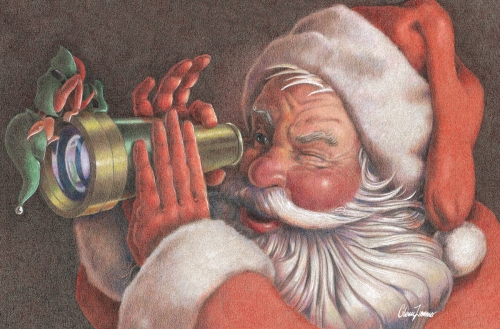
While this technique is fun and satisfying it is important that your drawing is the best that it can be before applying the color pencil. Because of the inevitable wax build-up of the pencils, corrections are very difficult if not impossible to make without destroying the integrity of the piece.
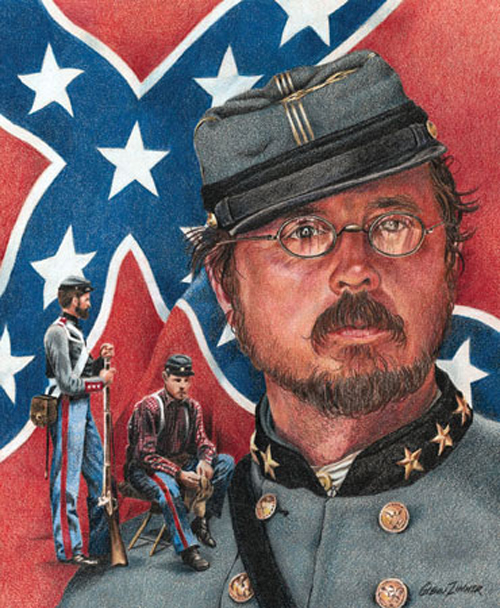
I have actually been compensated for my illustration work since 1973. However during that time I was working full-time as a graphic designer and art director so I would fit in illustration projects in the evenings or sometimes I was able to incorporate illustration into my design projects.
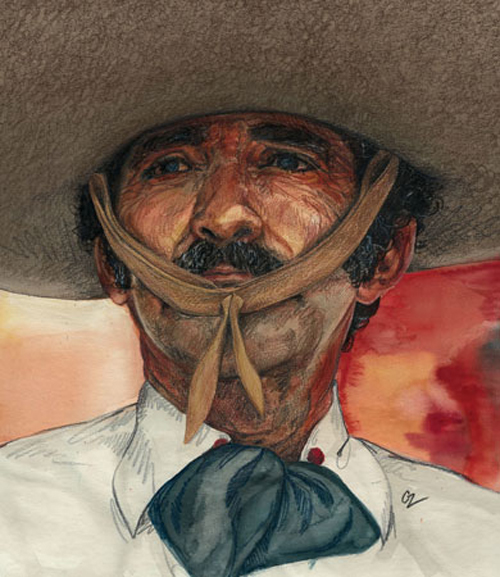
How did you decide to attend The Art Institute of Philadelphia?
Even though I had always wanted to be an artist, after high school I did not know how to go about getting the training I needed. I was working loading trucks at Sears when I saw an ad in the Sunday paper about the Art Institute of Philadelphia.

Can you tell us a little bit about that school?
At the time the Art Institute was not connected with the “Art Institutes” chain that it is currently. It had just been established by an art director named Philip Trachtman and was in the process of recruiting students. Mr. Trachtman’s idea for the school was to bring in professional designers and illustrators to teach each class. As I was only one of three students in the first class I received one-on-one training. I was also able to develop a professional relationship with each of my teachers that provided great opportunities as I began my career.
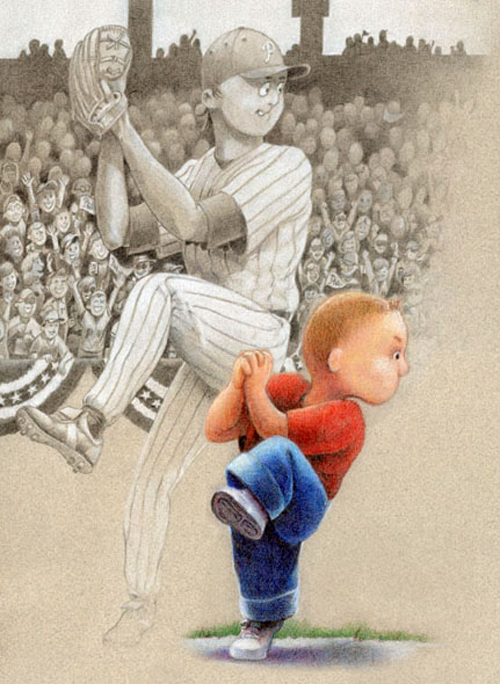
What types of things did you study there?
We began in the first semester with painting, drawing, sculpture, art history, color & design and mechanical drawing. After the first semester we added graphic design, typography, photography and illustration.
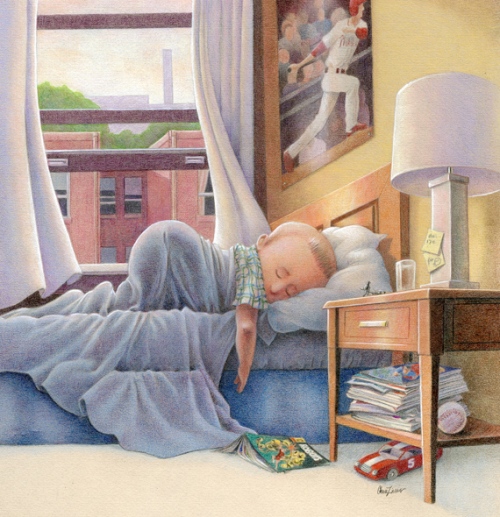
What classes were your favorites?
Definitely illustration. In my last two semesters I was able to major in illustration by taking an extra class. I also enjoyed “Mechanical Drawing” which had morphed into learning the printing process and mechanical preparation.

6. Did the School help you get work?
Yes. Being one of the members of the first class to graduate all eyes were on us and I graduated on a Friday and began my job as a designer at Gimbels Department Store in Philadelphia the following Monday. One of my teachers recommended me for the position.

Do you feel that the classes you took influenced your style today?
Yes. My illustration teachers were excellent technicians and their work consisted mostly of product rendering for retail and editorial illustration. I enjoy realistic illustration and although I am a children’s and humorous illustrator I try to make my environments as physically believable as possible.
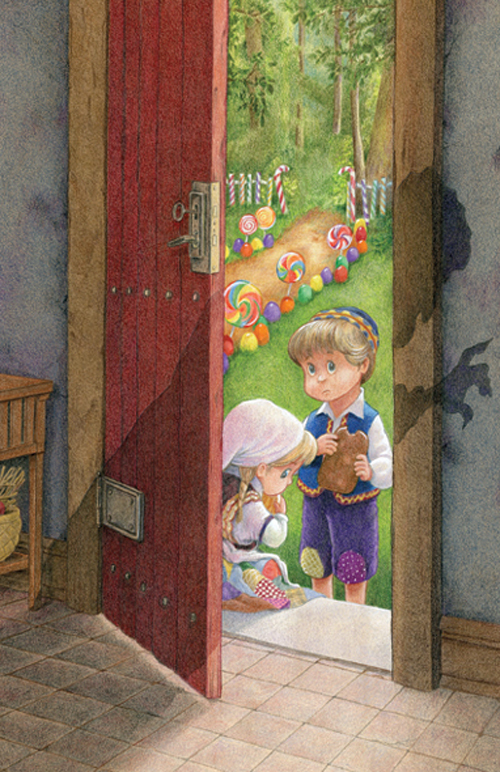
What was the first thing you did where someone paid you for your artwork?
One of my teachers gave me a job of creating a floor plan for an office space. I was paid 75 dollars and immediately put the money in the bank.
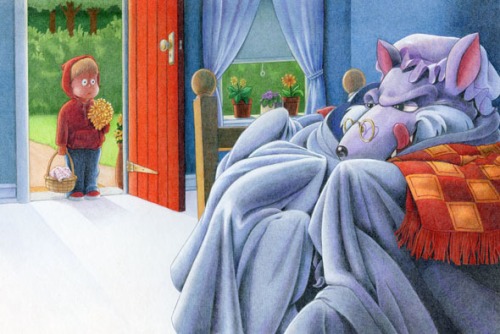
How did you find the job of Art Director at Mitchell & Company doing advertising?
A woman that I worked with at Gimbels had a brother who was the creative director for Mitchell & Co. She recommended me for the position. I worked there for two years getting my feet wet working on national accounts such as Beech Nut baby foods and the National Guard.
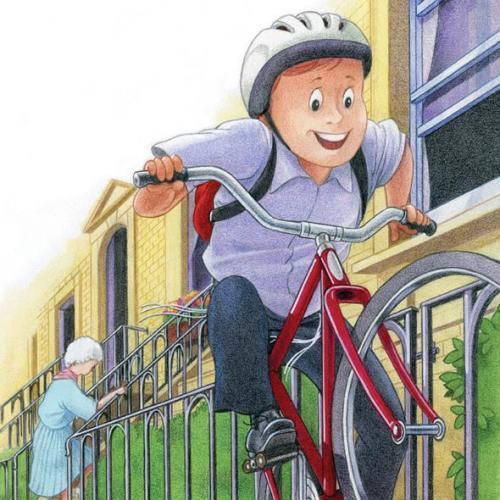
I see that you have won many awards for your work. Which one is nearest to your heart?
It’s always an honor to be recognized for your work. But in an email from Compass when I was working on one of their books I was told that I was one of the children’s favorite artists. That was cool!
But ask me again when I win my first Caldecott.
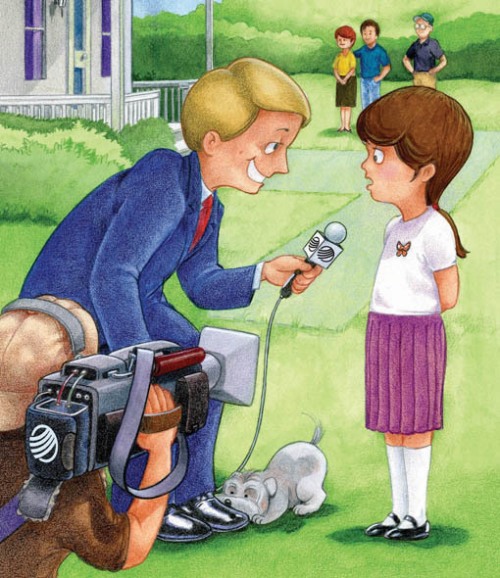
Were the awards for your body of work or was for a specific illustration or piece you can share with us?
They were for specific projects. Most of them were for design and illustration work that I had done as an art director.
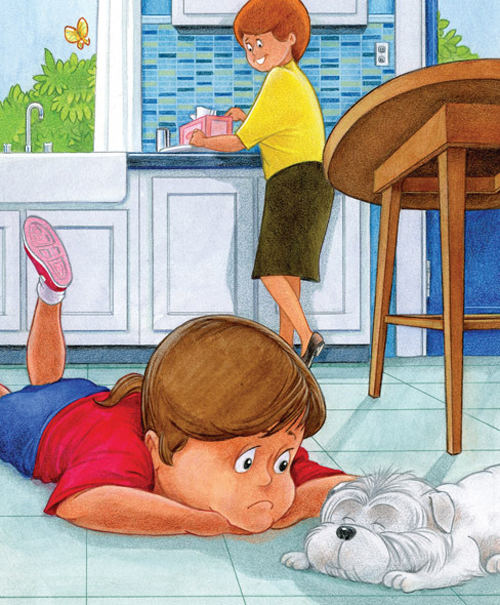
How did you make the connection to do illustrations with the Major Baseball Leagues?
Before I had my website, my first online presence was on www.theispot.com. From my portfolio there I received a call from the art director at Major League Baseball to do a spot for the World Series program. Being a sports fan I was on “cloud nine”.

When did you decide you wanted to illustrate a children’s book?
When I would go to events at my daughter’s elementary school I enjoyed looking at the children’s artwork and I felt very comfortable in the environment. The corporate world was not very much fun or creatively rewarding and the undemanding colorful world of children’s graphics appealed to me. Later my daughter became a teacher herself and encouraged me to try getting involved with children’s illustration.
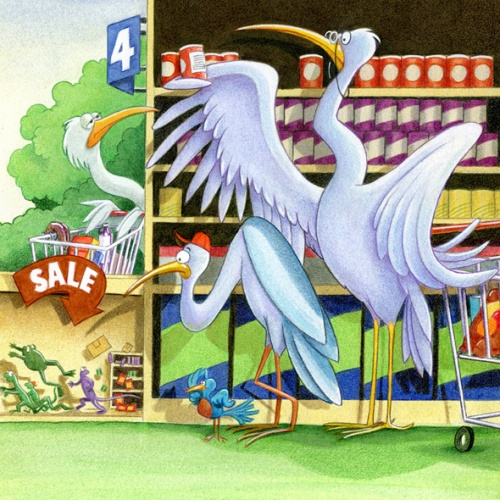
What was the first illustration work you did for children?
It was an assignment for an SCBWI Illustration workshop. I illustrated a two-page spread for a book called “Goose Moon”.
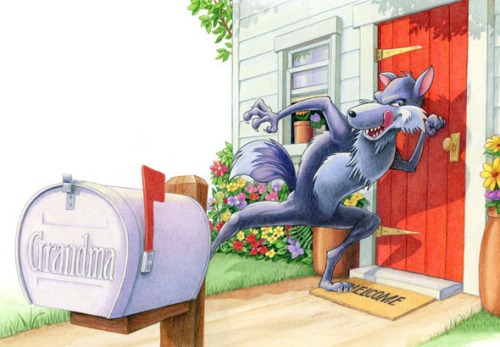
How did that come about?
I signed up for an SCBWI workshop in Philadelphia given by Tim Gilner from Boyds Mills Press. The assignment was to illustrate text from one of their books “Goose Moon”. The book had not yet been published so we could not see the actual art. I rendered the piece in the color pencil style that I have shown in my demonstration.
My first children’s work for which I received compensation was for Compass Publishing for a book called “Bug In A Hut”. It was done digitally using Photoshop.
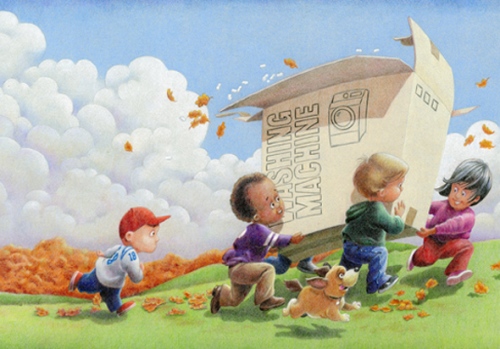
What type work did you do for Compass Publishing?
I worked on ESL readers. Compass is based in Korea and most of my assignments were to illustrate these stories for children as they learn to read English. Most of Compass’s work was 8 to 16 pages and either print-on-demand or exclusively online.
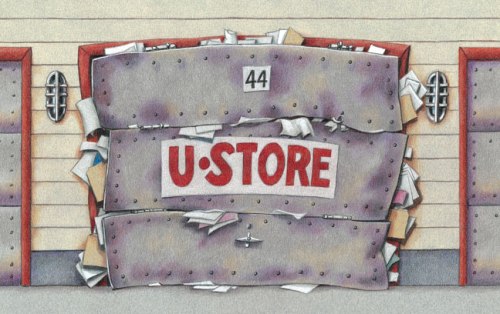
Can you tell us the story behind you getting work with them?
When I attended the SCBWI Eastern Pennsylvania “Fall Philly” conference in 2009 I had a portfolio review with WendyLynn & Co. who are children’s illustration agents from Maryland. They asked me to join their group and one of their best clients was Compass Publishing.

Did you do anything specific to get the contract to illustrate DOLLARS AND SENSE written by Tehilla Deutsch with Hachai Publishing?
Ms. D. L. Rosenfeld from Hachai liked an illustration that was on my website. She wanted that specific style and contacted me through my website.

Have you had any of the books you’ve written and illustrated published?
No. I have actually written a few and they are circulating but as of yet there has not been any interest.
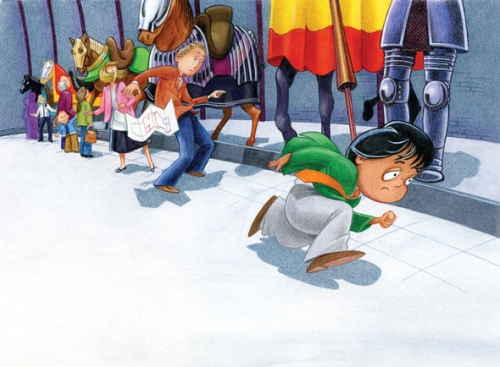
Have you done any work for children’s magazines?
No, but I would love to have the opportunity
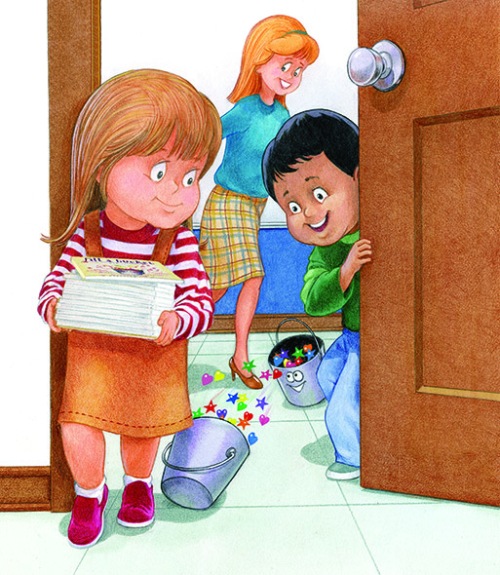
Have you worked for educational publishers?
Yes, I did a two page spread for Pearson Education, Inc. and my work for Compass which is an educational publisher.

Do you have an artist rep or an agent? If so, how did you connect?
WendyLynn & Co. Is my rep and as I mentioned I met them at the Eastern Pennsylvania SCBWI “Fall Philly” conference.
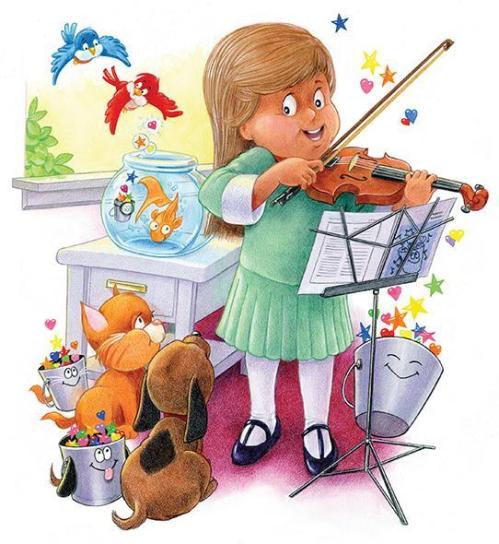
How did you get the Senior Portfolio Advisor at Moore College of Art?
I have been working with the faculty at Moore College of Art & Design for 14 years in my capacity as an Art Director. I worked a consultant for the Illustration Department evaluating portfolios and as a guest speaker. In my capacity as Corporate Art Director for the company where I was working I was able to establish an annual cash award to be given to a graduating senior in illustration. Last year I was asked to become part of the adjunct faculty.
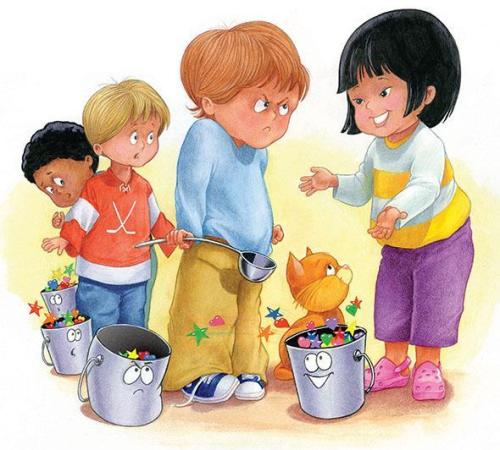
Are you open to illustrating for self-published authors?
Absolutely. I am currently in the process of working with a first time author.
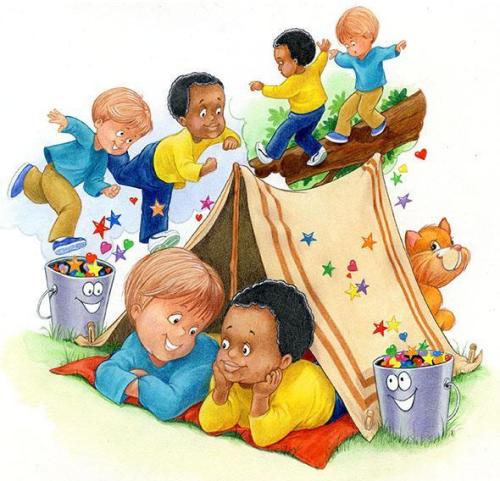
What type of things do you do to find illustration work?
Right now most of my work is through my agent. And I still have corporate clients that I have had for many years. As a children’s illustrator I market myself through my own website, childrensillustrators.com, quarterly postcard mailings, speaking engagements, my affiliation with the Bucks County Illustrators Society and the SCBWI as well as any other networking opportunities that may arise.
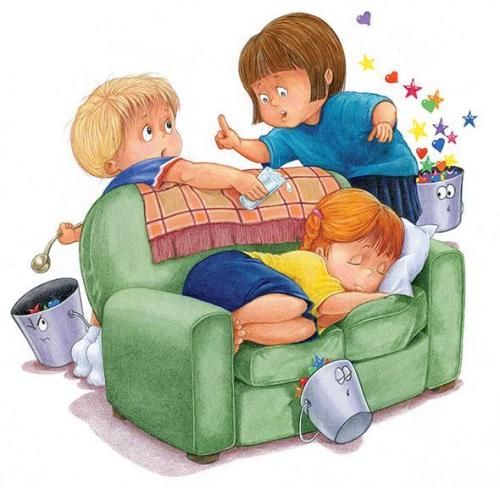
What is your favorite medium to use?
Color Pencil, although I am getting back to working with watercolor. I like the speed in which I need to work with that medium in contrast to the slow application of color pencil layering technique that I utilize.
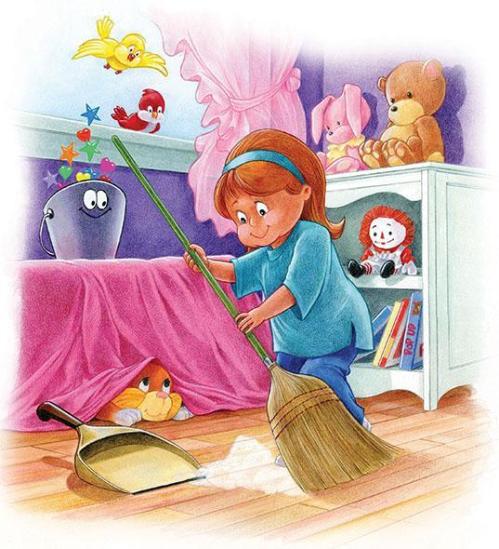
It looks like you have done a fair amount of work using colored pencil. Is there a trick to keep your hands from getting tired or cramped?
Not really. I just need to take breaks every now and then.
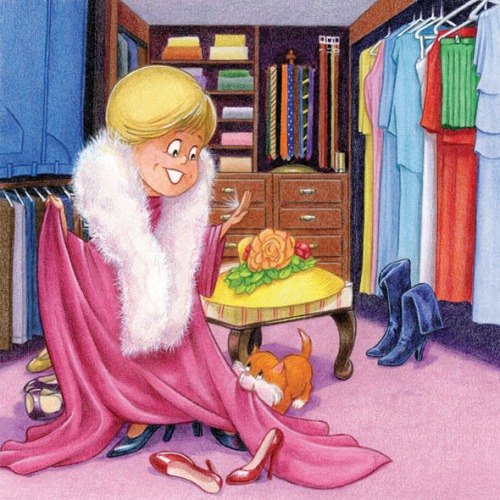
Not counting your paint, brushes, and pencils; what is the one thing in your studio that you could not live without?
My iMac. For most of my corporate clients I work in Photoshop and Illustrator. I also need to keep up with industry news and opportunities that come from my websites. Many of my illustrator friends have encouraged me to go on Facebook and be more active in social media but I just think the opportunities for work that would result from a presence on Facebook is overblown and for me a waste of time. They call me Mr. “Anti-Social Media”
I am on LinkedIn however, so I guess I am somewhat involved in social media.

Do you try to spend a specific amount of time working on your craft?
I work as much as I can which to me is not enough.
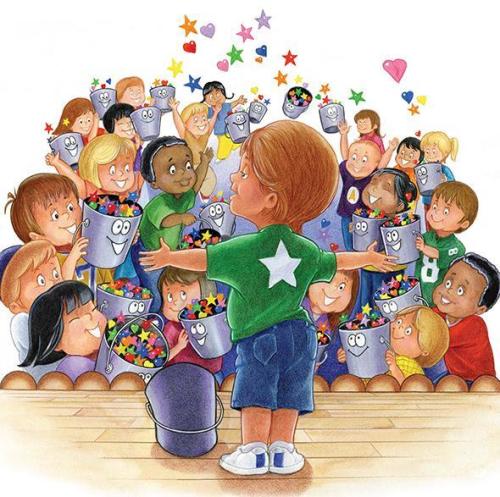
Do you take pictures or do any research before you start a project?
I am beginning to get more specific in locating my reference material. I usually just use “Google” images. Because of my deadline oriented background I have always been concerned with speed and meeting a print schedule. Now I have taken specific reference photos when necessary and have found that it really does help me render a more effective illustration.
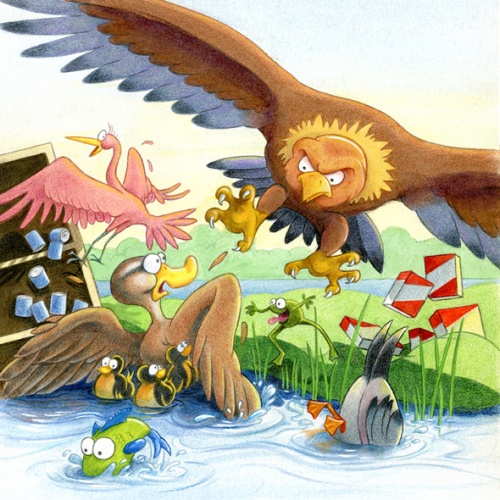
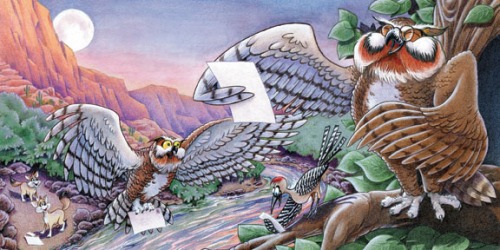
Do you think the Internet has opened doors for you?
Definitely. My work is now available to be seen around the world which is great for any visual artist.

Have you ever used Photoshop with your illustrations?
Yes. I have used Photoshop as an illustration tool as well as for making corrections on illustrations digitally and correcting color output.
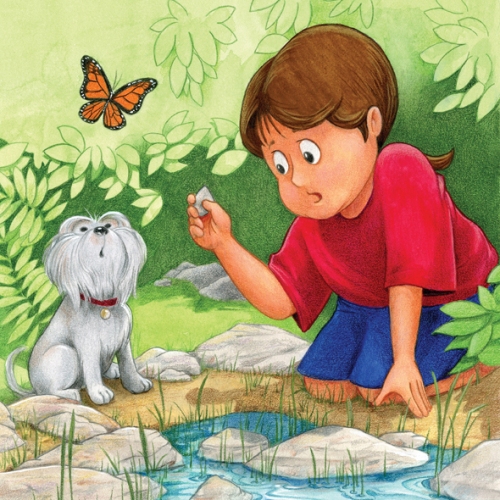
32. Do you own a Graphic Drawing Tablet?
Yes. But I do not use it most of the time. I am so used to the mouse and have not had the time to really practice with the stylus. My friends tell me once I become comfortable I’ll never use a mouse again.
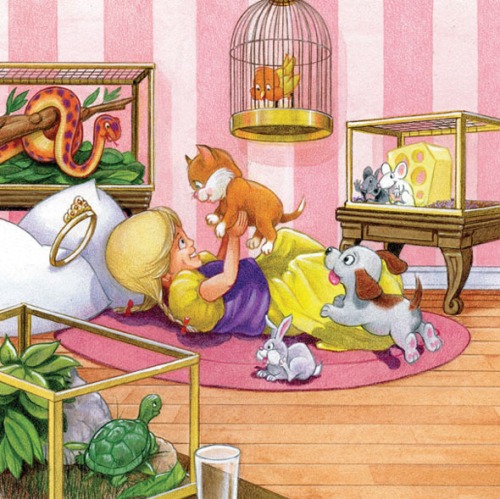
Do you think your style has changed over the years? Have your materials changed?
I was doing a lot of digital illustration using Photoshop and Illustrator but in the last few years have gone back to conventional media such as watercolor and I have even begun to try oils again. As I said I will use Photoshop to make last minute changes and color correction.
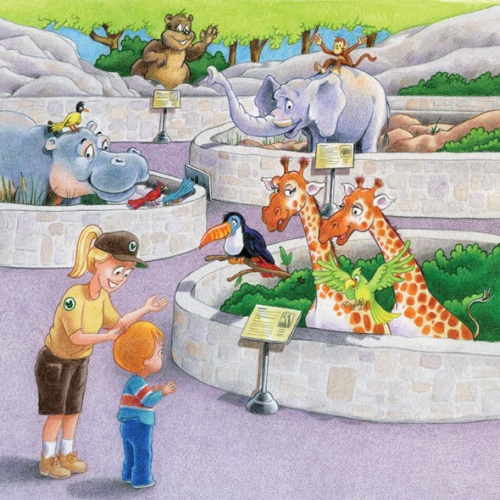
Do you have any career dreams that you still want to fulfill?
I have recently finished the illustrations for “Bucket Filling From A to Z: The Key To Being Happy” by Carol McCloud and Caryn Butzke. It was a very rewarding experience as Ms. McCloud and Ms. Butzke are truly dedicated and exceptional people. It is a wonderful book for children for character building and creating self-esteem. If I can keep working on those kind of projects and possibly making a real difference in children’s lives, that will be great. If I can afford to pay my bills along the way, that will be “icing on the cake”. 35. What are you working on now?
I am in the early stages of illustrating a story by a self-publishing author. I am also in the process of writing another book and working on a children’s graphic novel.
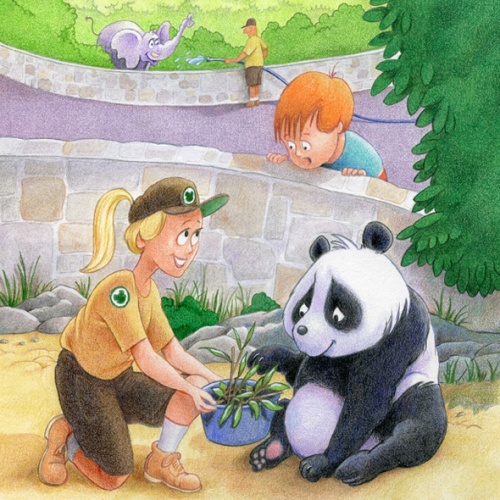
Do you have any material type tips you can share with us? Example: Paint or paper that you love – the best place to buy – a new product that you’ve tried – A how to tip, etc.
If anyone wants to try color pencils I would recommend Berol Prismacolor brand pencils. They are color intense without being too waxy.
Even though you will be told that the Mac and PC are the same when working in the graphics industry, don’t believe them. I believe the Mac is a far superior tool for the creative artist.

Any words of wisdom on how to become a successful writer or illustrator?
One of my teachers at the Art Institute who was to become a very good friend told me in the field of art to never feel that you are too good to do any project and when you do it do it the best of your ability. Because of his advice I never minded doing assignments that others would not accept because they thought they were beyond that aspect of their careers. I believe that by following his advice I experienced opportunities to learn and grow as an artist and more importantly as a person.

Had to put this one in, because it reminds me of what I must have looked like while working to get everything done during my ten years as Regional Advisor of the New Jersey SCBWI. Thank you Leeza for stepping and running the chapter.
Thank you Glenn for sharing your process and journey with us. You make using colored pencils look so effortless and I know that isn’t the case. Please make sure you share new illustrations with us and keep us up-to-date on all your future successes. Here is Glenn’s website: www.glennzimmer.com/
Children’s Illustrator:www.childrensillustrators.com/illustrator-details/GZimmer/id…/portfolio/
LinkedIn:www.linkedin.com/in/glennzimmer




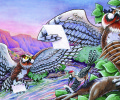
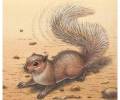
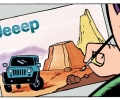
Wonderful article Glenn, thanks for sharing so much.